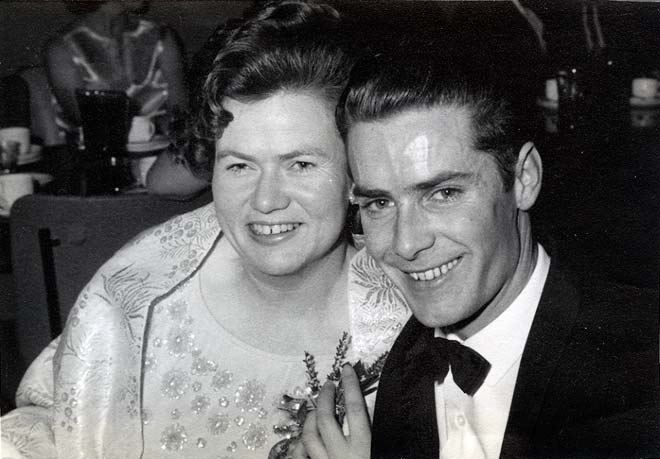
Brian Hollis is all dressed up for the Shell Ball in June 1967 – his first date with his future wife, Jocelyn. It holds happier memories than the morning 10 months later, on 10 April 1968, when he set off from his home in Strathmore. He was working as Boys’ Welfare Officer for the Child Welfare Division in Lower Hutt.
What\'s you story?
Contributed by Brian Hollis.
On that morning I left for work a little earlier than usual, because I had some papers to drop off at the Wellington office on my way through to the Hutt. The Wellington office was in a building called Cubewell House, almost behind the Embassy Theatre. Dropping papers off happened every so often, because I was a convenient ‘postman’ for the Hutt office, living as I did in Wellington. But I still cursed a bit at having to leave home earlier and having to break my journey. As it turned out, those were the least of my problems.
My trusty 1958 Ford Prefect did not have a radio – they were not a standard fitting in those days – so I had not heard any news or weather reports on my way to work. About 8.15 a.m. I parked in Kent Terrace, almost opposite the Embassy Theatre, as you could in those days. As I looked through the windscreen I thought the weather looked a bit rough, but as a born and bred Wellingtonian, I was used to a bit of a breeze. Stopping at all on the way to work turned out to be a big mistake.
I got out of the car with a bit of a struggle into the wind, but soon became aware of an unbelievably strong wind. The funnel effect of Kent Terrace made it worse as it blew towards the Basin Reserve. My thoughts immediately changed from walking across to the Wellington office, to survival and seeking shelter. But before I could find any shelter, the wind blew me out into the middle of the street, into the path of oncoming traffic which I and others in a similar situation hoped would stop for us. This was both dangerous and frightening.
Some people were clinging to lamp posts; others sought the shelter of shop doorways. That’s where I headed when the wind dropped enough for me to regain some control of my direction. I huddled in a doorway with others, confident that we would all be safe, at least in the meantime. But then the shop’s huge plate glass window was completely blown out by the wind, and glass shattered everywhere on the footpath. I realised that it was not actually safe anywhere in the open, not even in an obvious shelter.
I eventually made it back to the car and out to the Hutt. I didn’t deliver those papers and I didn’t visit any clients that day. We looked out the office windows to see sparking broken power lines and a Volkswagen car picked up off the ground by the wind, then dropped again.
My overwhelming feelings at the time were of fear and panic, but mainly helplessness and powerlessness. For a time there was nowhere to hide from the forces of nature, and a total lack of control over my situation. But then again, I’m still alive.
Te whakamahi i tēnei tūemi
Private collection
This item has been provided for private study purposes (such as school projects, family and local history research) and any published reproduction (print or electronic) may infringe copyright law. It is the responsibility of the user of any material to obtain clearance from the copyright holder.







Tāpiritia te tākupu hou